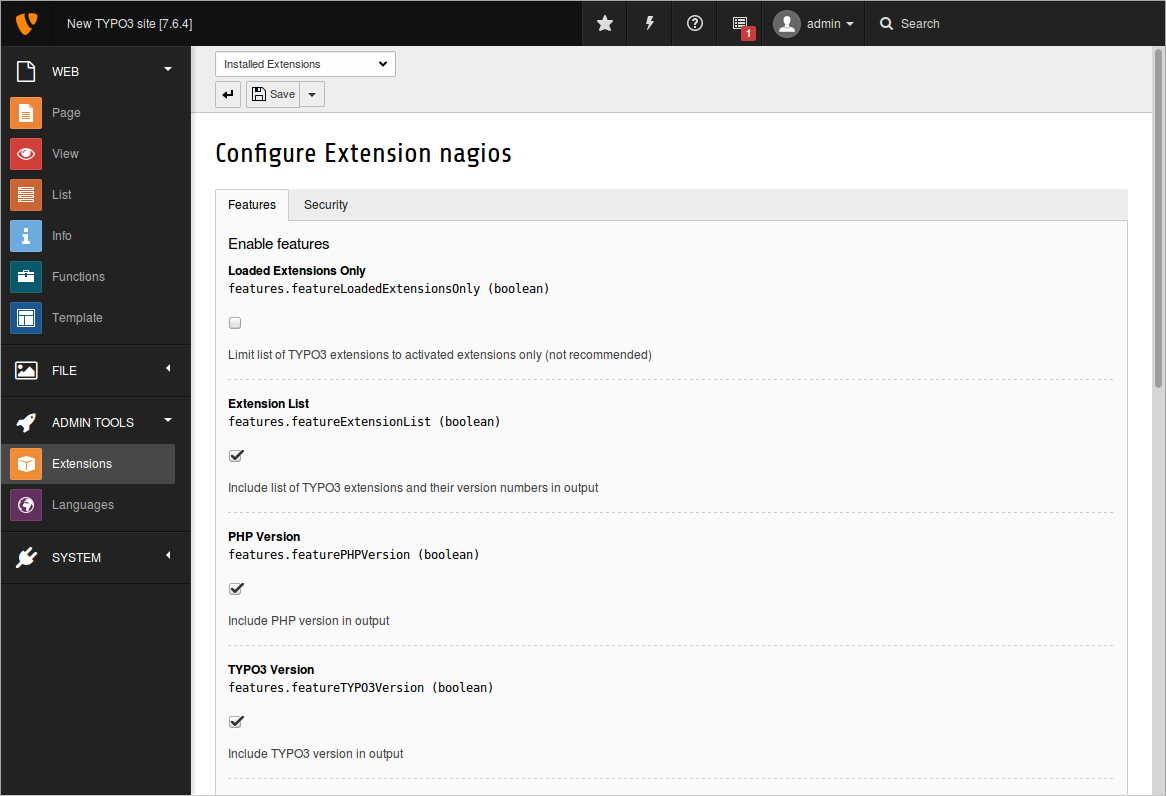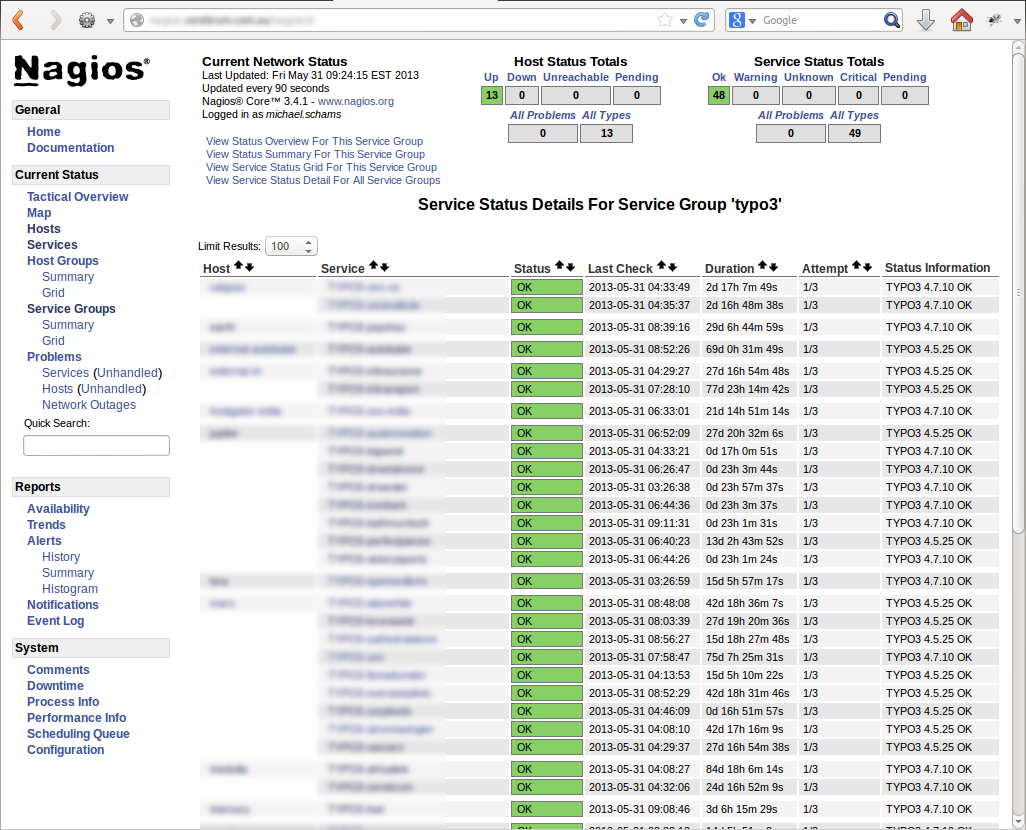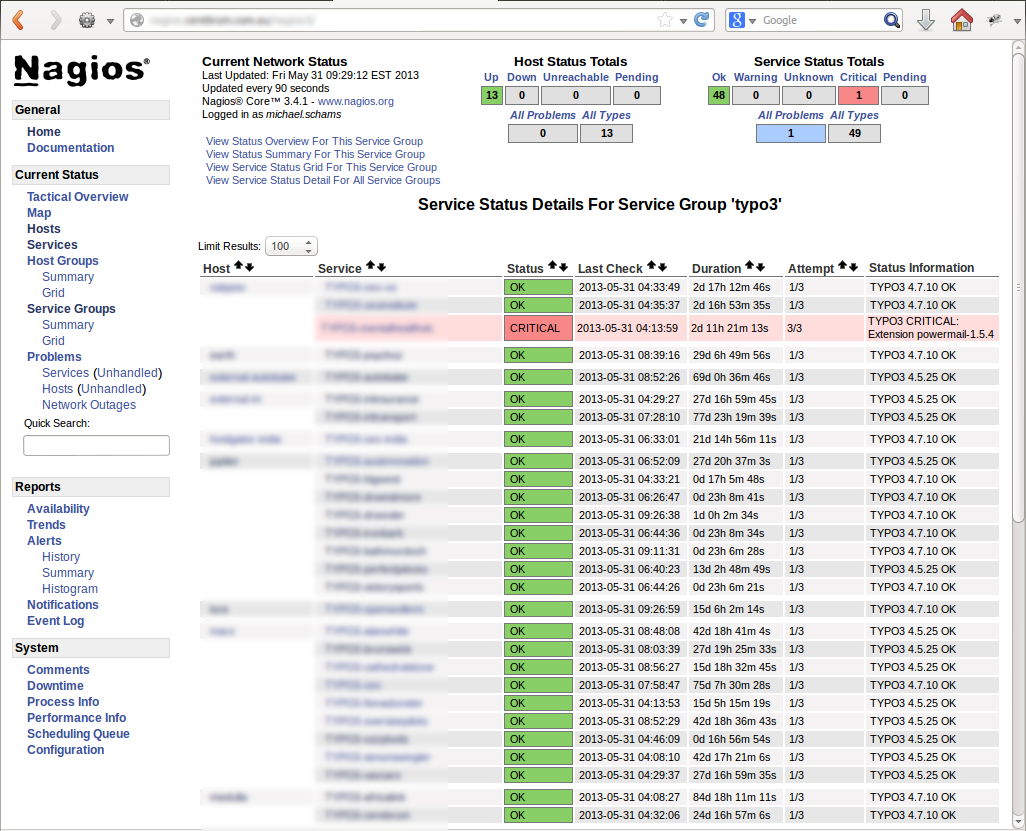Screenshots¶
The following screenshots clarify the extension configuration options and provide an example how Nagios® could interpret the data generated by the TYPO3 Nagios® Extension.
Screenshot above: The extension configurations allow you to enable or disable each feature of the TYPO3 instance. The settings control which information should be passed to Nagios®. The Nagios® TYPO3 plugin (the counterpart of the extension) reads this data and reacts according to the configuration (for example: triggers a warning if TYPO3 reports an old version).
Screenshot above: A typical view of the Nagios® server web interface. The summary of the service group “TYPO3” lists all TYPO3 instances and gives system administrators a quick overview that all sites are “OK”, which servers (hosts) they are running on and which TYPO3 version they are using.
Screenshot above: The same Nagios® server web interface – but in this case Nagios® detected an insecure extension (powermail version 1.5.4, see TYPO3 Security Bulletin TYPO3-SA-2010-021) and was configured to generate a critical condition for the appropriate server. Other options would be to configure Nagios® to generate warnings if the TYPO3 version is outdated or the PHP version is a specific one for example.



